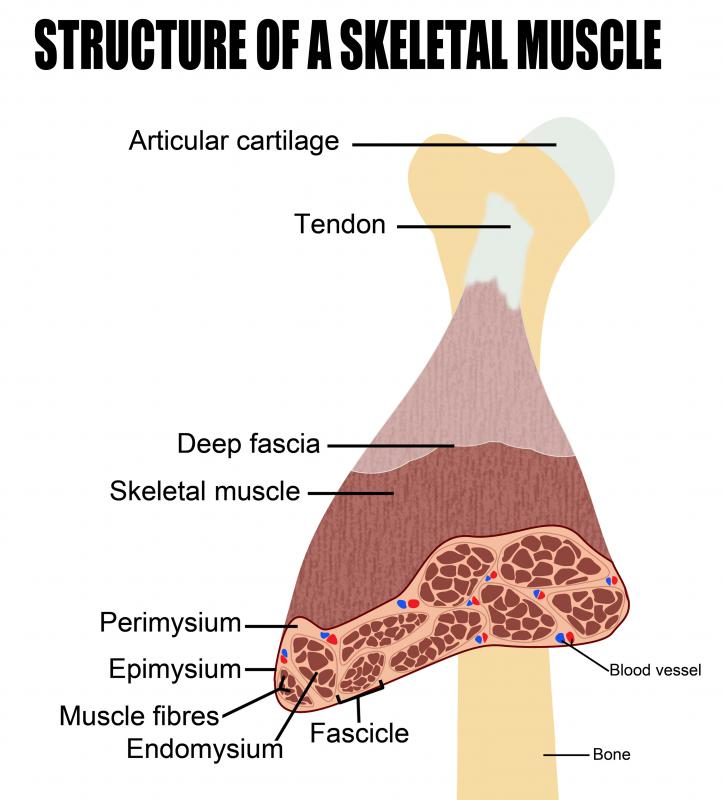At TheHealthBoard, we're committed to delivering accurate, trustworthy information. Our expert-authored content is rigorously fact-checked and sourced from credible authorities. Discover how we uphold the highest standards in providing you with reliable knowledge.
What are Intermediate Filaments?
Intermediate filaments are insoluble proteins that help form a cell's cytoskeletal system, the internal framework that gives a cell its shape. These proteins are found in nearly all multi-celled organisms. There are three basic types of filaments: thin filaments, which are usually about 8 nanometers (nm) in diameter; intermediate filaments, which average about 10 nm; and microtubules, which measure about 25 nm. Intermediate filaments are typically stable and durable because of their insolubility; they are often found in cells that take a lot of stress, such as skin, muscles, hair and nails, or claws in some animals.
There are five types of intermediate filaments, categorized by their protein characteristics. Type I contains acidic keratins and Type II has basic keratins. Both Type I and Type II filaments are found in epithelial cells, which also form hair and nails. Keratin intermediate filaments create junctions that bind cells together, forming pairs that consist of one basic and one acid keratin protein.

Type III intermediate filaments can include one of four different proteins. Desmin proteins are found in both smooth and striated muscle cells, including the cardiac muscles. Glial fibrillary acidic protein (GFAP) is found in neuroglia cells in the brain and spinal cord. Other parts of the peripheral nervous system contain peripherin proteins, and the vimentin protein is found in fibroblasts, or white blood cells, and the thin layer of cells that line the interior of blood vessels.

Neurofilaments, which are proteins found in neurons, make up Type IV. Neurofilaments are built from three intertwined protofibrils and are the most abundant fibers of axons, the long fibers of nerve cells. This type of intermediate filament establishes the diameter of axons and dendrites, the branch-like ends of the neuron that transmits electrical signals.
Type V intermediate filaments are lamins, or fibrous proteins found in a cell's nucleus. Unlike the other types, which are all considered cytoskeletal, Type V filaments are nucleoskeletal — the lamins form a mesh within the inner membranes that surround the nucleus. Lamins are involved in several important functions, including DNA synthesis and the assembly and disassembly of the membranes that enclose the nucleus during cell division.
Despite the chemical and protein differences in each type of intermediate filament, they all play a similar role in providing a structured frame for cells. Mutations in intermediate filaments can cause various diseases, including epidermolysis bullosa simplex, a skin blistering disease, and amyotrophic lateral sclerosis (ALS), which is also known as Lou Gehrig's Disease.
AS FEATURED ON:
AS FEATURED ON:












Discuss this Article
Post your comments